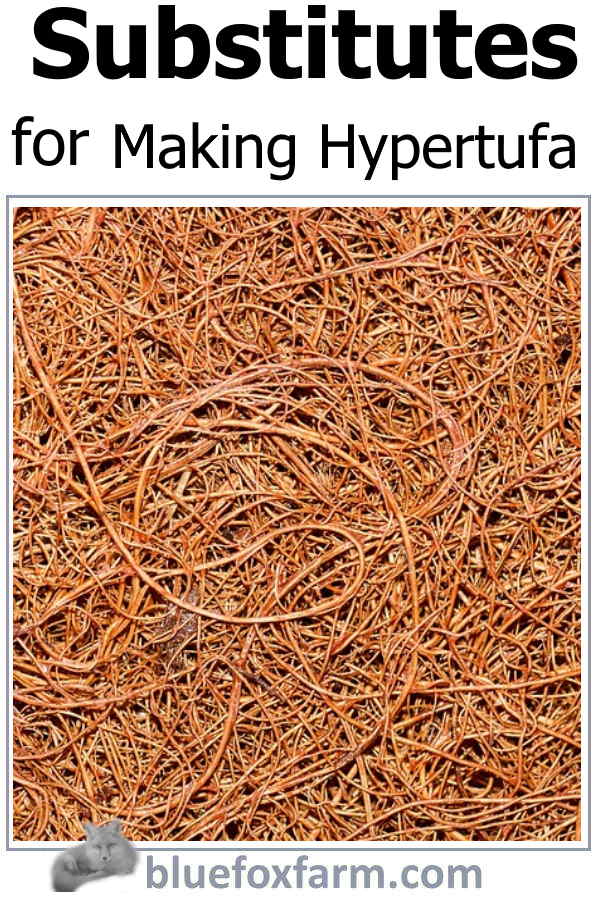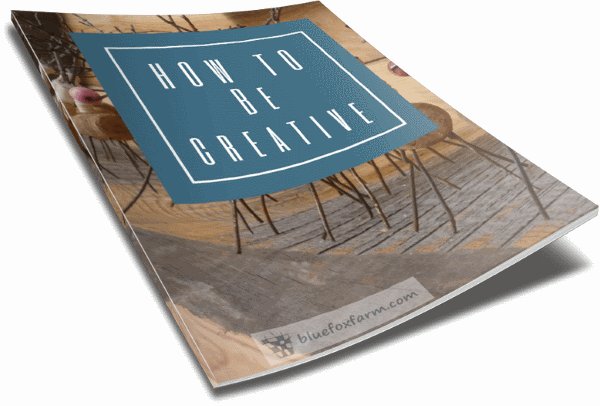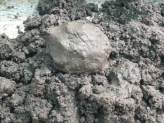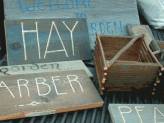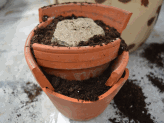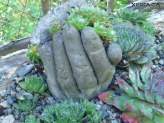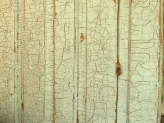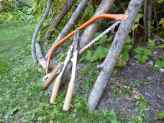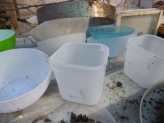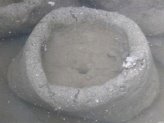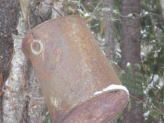Substitutes for Making Hypertufa
What Alternative Ingredients Are There?
I was just asked this question; Can I substitute the peat moss for something else - it's not available where I live and I want to make a large pond pot.
Questions like this kind of make me chuckle, as hypertufa itself is a copy of a natural volcanic rock.
Hypertufa, a composite mixture of materials, has been used for years by garden enthusiasts and artisans to create unique and appealing pots, containers, sculptures, and other garden works of art.
Its ingredients: Portland cement, peat moss and perlite or vermiculite, combined in equal parts, lend themselves to experimentation and modification.
This feature makes hypertufa an ideal medium for those seeking substitutes for making hypertufa that are not only easy to find on the market but also make less environmental damage.
So, let's examine these alternative materials used in hypertufa applications to carve out a path towards a smaller carbon footprint without compromising the quality of our garden crafts.
The primary ingredient of classic hypertufa, Portland cement, is an essential element that gives the composition its rigidity and durability. Due to its integral role, substitution can prove tricky, yet not impossible.
As an alternative to Portland cement, some artisans have found success in using other types of cement like masonry or white cement.
These can offer almost the same sturdiness and durability, sometimes in a more aesthetic package, due to the lighter color provided by white cement. They are often used for something else, such as construction works and can be more commonly found.
The following element of the hypertufa trilogy, peat moss, is a fibrous material that helps hypertufa maintain its light weight.
It, however, has a pronounced environmental impact due to its harvesting from bogs, which are vital ecosystems that sequester carbon. Searching for a substitute for peat moss in hypertufa is an ecological obligation.
Coconut coir, a waste product of the coconut industry, is a fantastic alternative to peat moss. It possesses a similar fibrous texture and can serve as a more sustainable, carbon-friendly alternative to peat.
It's also a cost-efficient material, being both cheaper and less costly to ship, making it an advantageous choice for the environmentally conscious hypertufa maker.
Many gardeners are already combining coir with other ingredients to make a lightweight soil mix for hanging baskets, so it's easy to find.
Another option to replace peat moss is leaf mold, decomposed leaves that provide the fibrous quality needed for the hypertufa mix.
A benefit of using leaf mold is that it can be produced at home, reducing costs and further minimizing your carbon footprint.
You would need to try different types of leaves, and different ways of preparing them, such as weed whacking them in a barrel, feeding them through a chipper, or laying them on the lawn and running over them with a lawnmower. Fresh or dried leaves might produce different results.
Keep records so you can reproduce the same result next time, or alter some part of the procedure.
Perlite and vermiculite, our third classic hypertufa component, contribute to the lightness of the material.
Both of these elements, especially perlite, have a carbon cost tied to their expansive mining and processing operations, hence the quest for greener alternatives.
Pumice, a lightweight, porous volcanic rock, is one such alternative. It maintains the necessary lightness and draining properties with possibly less environmental damage tied to its production.
Pumice, however, may not be readily available in certain regions, so suitability would need to be checked based on location.
Rice hulls, another perlite and vermiculite replacement, are an agricultural waste product.
They are lightweight and allow for excellent drainage, thus mimicking the purpose of perlite and vermiculite effectively. Their use also significantly reduces the wastage of an otherwise discarded material.
The techniques for using these alternative materials largely mirror those used in the traditional hypertufa recipe. Novice enthusiasts and experienced artisans alike can achieve the desired results with minor adjustments.
However, the texture, dry time, and finished appearance of your hypertufa may vary depending upon the substitutes you use.
You'll need to conduct trials when you're making hypertufa using alternative materials in order to find the perfect blend for your needs.
One other innovative way to lower the carbon footprint of hypertufa projects is by incorporating industrial by-products into the mix.
For example, adding fly ash, a waste product from coal-burning power plants, to the cement portion of the recipe can result in a slightly lighter, stronger product.
Yet another novel method involves using recycled materials. Broken pieces of tempered glass or bits of old ceramic pots could be included into the hypertufa mix, giving new life to what would otherwise be waste, aligned with the ideal of converting trash to treasure.
Using these alternatives not only helps make hypertufa with less environmental damage, but it can also create a unique selling feature for your wares.
The story of sustainability and creativity can be a strong selling point that attracts an environmentally aware customer base.
Using the hypertufa pots to cultivate plants that improve soil health, gardening with native species or making an insect haven can further enhance your eco-friendly gardening practices.
Many of the alternatives to traditional hypertufa ingredients discussed are more common, cheaper or less costly to ship. In addition to being appealing from an environmental perspective, this also makes them more accessible to a wide range of artisans, opening up the realm of hypertufa to more artists and craft enthusiasts.
Further, by using substitutes for making hypertufa, you're not only making a stand for the environment and preserving our precious eco-systems, you're also inspiring others to do the same.
One person's decision to choose eco-friendly materials can have a ripple effect, inspiring other crafters and garden enthusiasts to explore these green options.
In conclusion, by choosing alternative materials to make hypertufa with less environmental damage, you're contributing positively to the planet, while also infusing interest and variety into your craft.
You can create something extraordinary, beautiful, and eco-friendly, that not only enhances your garden or crafts but your role as a gardener, artisan, and earth-friendly citizen. Through these practices, the traditional craft of making hypertufa can become a beacon of sustainability.
Learn what it takes to be creative - we all have the gene but how do we develop it? Get the free guide!
Fill in the form below for your copy;
(Don't be disappointed - use an email address that will accept the free download - some .aol email addresses won't.
If you don't see your download within a few minutes, try again with another email address - sorry for the bother.)
